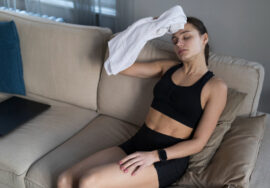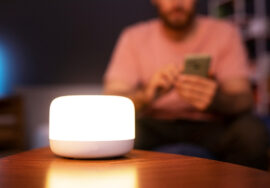
From Fillers to Functional: How Gut Friendly Nutrition Outperforms LED Therapy in Wellness Trends
Introduction: Rethinking Wellness in the Age of Trends
Wellness trends often rise and fall, promising quick fixes for complex health needs. From skincare fillers to LED light therapy, many solutions attract attention but may not deliver sustainable results. At the same time, research consistently points toward the gut as the foundation of overall well being. As more people seek lasting results, gut-friendly nutrition is emerging as a functional, evidence-based approach that outperforms cosmetic and surface-level therapies. In the evolving world of fitness and wellness, what we put inside our bodies matters more than temporary external treatments.
Understanding LED Therapy in Wellness
LED therapy uses specific light wavelengths to stimulate skin cells, reduce inflammation, and promote collagen production. It has become popular in beauty and recovery circles for benefits such as reducing acne, supporting wound healing, and improving skin tone. While these benefits are valuable, LED therapy is surface-level. It enhances appearance and provides localized results, but it does not address the deeper systems that regulate long-term fitness, energy, and immunity.
Why Gut Health is the Cornerstone of Wellness
The gut is often referred to as the “second brain” due to its profound impact on overall health. A balanced gut microbiome supports digestion, nutrient absorption, immunity, and even mental well being. When gut health is compromised, symptoms like fatigue, bloating, skin issues, and reduced exercise recovery can emerge. Gut-friendly nutrition, therefore, becomes a central pillar of fitness because it improves how the body functions from the inside out.
Functional Foods vs. Surface Solutions
Unlike temporary therapies, gut-friendly nutrition focuses on functional foods—those that provide health benefits beyond basic nutrition. Probiotic-rich yogurt, fiber-packed vegetables, prebiotic grains, and fermented foods actively work to balance the gut microbiome. This holistic approach promotes long-lasting improvements in energy, mood, and resilience. By comparison, LED therapy addresses only external concerns, making gut-focused nutrition a more comprehensive wellness solution.
The Fitness Connection: Gut Health and Performance
For fitness enthusiasts, gut health plays a crucial role in performance and recovery. A healthy gut ensures:
- Better nutrient absorption to fuel workouts.
- Improved immune function to reduce illness and downtime.
- Balanced inflammation for quicker recovery post-training.
- Stable energy levels to support endurance and consistency.
LED therapy, while useful for localized recovery, cannot provide these systemic benefits. Functional nutrition builds the foundation for both performance and long-term resilience.
Wellness Trends Moving from Fillers to Functional
Cosmetic fillers and LED therapy appeal to appearance-focused wellness. They offer temporary changes in skin or recovery but do little to address root causes of fatigue, poor recovery, or systemic inflammation. Consumers are now shifting toward functional wellness—approaches that provide deeper benefits, such as longevity, mental clarity, and sustainable fitness results. Gut-friendly nutrition aligns with this shift, transforming wellness from aesthetic fixes to holistic well being.
Practical Steps to Gut-Friendly Nutrition
Families and individuals can embrace gut-friendly nutrition by:
- Adding fermented foods like kimchi, sauerkraut, or kefir to meals.
- Including fiber-rich fruits and vegetables to feed healthy gut bacteria.
- Choosing whole grains and legumes for sustained energy.
- Limiting processed foods and sugars, which disrupt the microbiome.
- Incorporating probiotic supplements when needed to balance gut flora.
These dietary habits not only improve gut function but also support fitness goals like better performance and faster recovery.
Expert Perspectives on Gut Health vs. LED Therapy
Nutritionists emphasize that gut health directly influences weight management, immune strength, and exercise recovery. Sports medicine experts highlight that athletes with strong gut health often experience fewer illnesses and more consistent performance. In contrast, dermatologists and physiotherapists note that LED therapy is best seen as a complementary treatment rather than a foundation of wellness. The consensus among experts is clear: nutrition drives long-term results, while therapies like LED play a supplementary role.
Integrating Gut-Friendly Habits into Daily Fitness
The key to making gut-friendly nutrition effective is consistency. Pairing these habits with fitness routines creates a lifestyle that supports both physical performance and long-term wellness. For example:
- Refuel with a probiotic smoothie after workouts.
- Use high-fiber snacks instead of processed protein bars.
- Combine hydration with fermented beverages like kombucha for added benefits.
Such simple changes help integrate functional nutrition into a daily fitness lifestyle seamlessly.
Conclusion: Choosing Function Over Fads
Wellness trends will continue to evolve, but the foundation of health lies in what fuels the body. While LED therapy and fillers may provide temporary surface benefits, gut-friendly nutrition transforms health at its core. It supports fitness, strengthens immunity, and enhances overall well being in ways that cosmetic solutions cannot match. In the pursuit of true wellness, the path forward is clear: prioritize functional, gut-focused nutrition for sustainable health and resilience.





